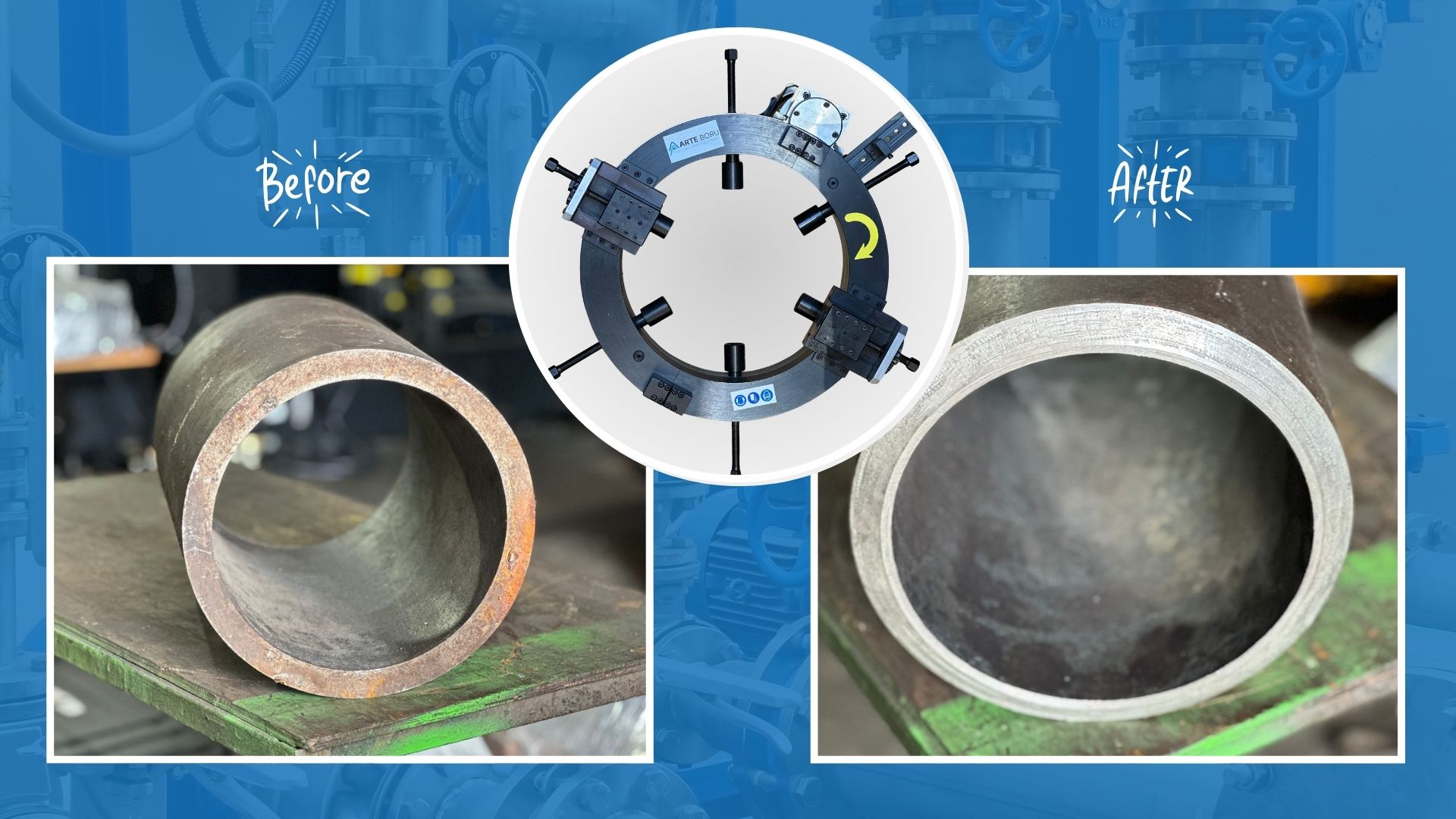From large industrial plants to small-scale workshops, pipe beveling can be considered the foundation of successful pipe joining. This process significantly affects the strength and quality of the pipe weld.
ARTE Pipe Beveling Machines are professional machines tested multiple times in real field conditions.
Why Pipe Beveling: Why is Cutting Alone Not Enough?
Beveling is the term used for the angle created at the edge of the pipe to allow for the penetration of the weld filler material.
With Proper Beveling:
- Weld filler fully penetrates and reaches all edges, ensuring a smooth joint.
- It contributes significantly to the overall strength of the pipe.
- Minimizes imperfections such as slag and other defects.
- Reduces waste and significantly shortens welding time.
Types and Geometries of Weld Bevels:
The bevel geometry depends on pipe wall thickness, material, welding method, and load requirements.
1. V-Type Bevel (Single V Groove)
- Description: A single angled cut usually between 30°–45°, forming a V shape (60°–90°) when two pipes are joined.
- Application: Ideal for medium wall thickness pipes.
2. X-Type Bevel (Double V Groove)
- Description: Angles are formed on both the inner and outer sides of the pipe (double-sided V).
- Application: Essential for thick-walled pipes, allowing welding from both sides and reducing filler volume by half.
- Advantage: Heat input is distributed, significantly reducing deformation risk.
3. J-Type Bevel (J Groove)
- Description: A curved inner bevel resembling the letter "J" instead of a sharp angle.
- Application: Preferred in thick pipes and automatic welding systems.
- Advantage: Requires less weld material than V bevels, ideal for tight space welding and ensures high arc control and quality.
4. Compound Bevels
- Description: A combination of V and J geometries or a multi-angled bevel.
Comparing Beveling Methods
Just as important as selecting the right bevel angle is achieving it with precision and quality. Industry solutions range from manual tools to advanced automated machines.
| Method | Quality & Precision | Speed & Efficiency | Safety | Cost |
|---|---|---|---|---|
| Manual Grinding | Low (High dependency on operator, high risk of error) | Very Slow | High risk of accidents and poor ergonomics | Very Low |
| Oxy-Acetylene / Plasma Cutting | Medium (May require finishing for smooth surface) | Medium | Heat deformation risk present | Medium |
| Portable Beveling Machines | High (Near-CNC precision) | Fast and Consistent | Very High (Enclosed cutting zone) | Medium – High |
| Stationary Beveling Machines | Highest (Repeatability) | Fastest (High-volume production) | Highest | High |
Industrial Solution: Portable vs. Stationary Machines
- Portable (Handheld) Machines: Best used when the pipe cannot be moved. Clamps onto the pipe and machines it on-site. Cold cutting method preserves the pipe’s material integrity.
- Stationary Machines: Ideal for workshop or factory environments and high-volume production. Though more costly, they are highly recommended. Comes with fully or semi-automatic feed and cutting options and offers long service life.
Conclusion: Beveling is 50% of the Welding Job
Experienced professionals often say, “A well-prepared bevel is half the job.” This phrase perfectly summarizes how critical beveling is in pipe welding.
To achieve cost-effective, fast, and reliable project results:
- Select the most suitable bevel geometry (V, X, J, etc.) for your pipe application.
- Choose a beveling machine that provides precision and quality for the selected geometry.
- Use cold machining methods on-site to avoid damaging the pipe material.
Remember: No matter how good your welding machine is, a poorly prepared bevel will always result in subpar work. Perfect beveling is the keyword to welding excellence.



